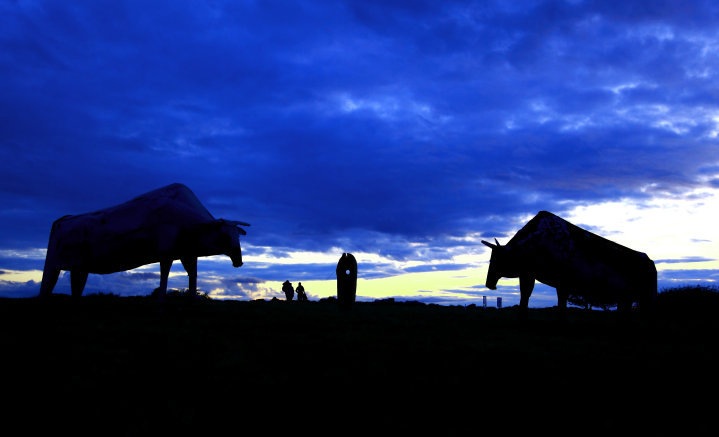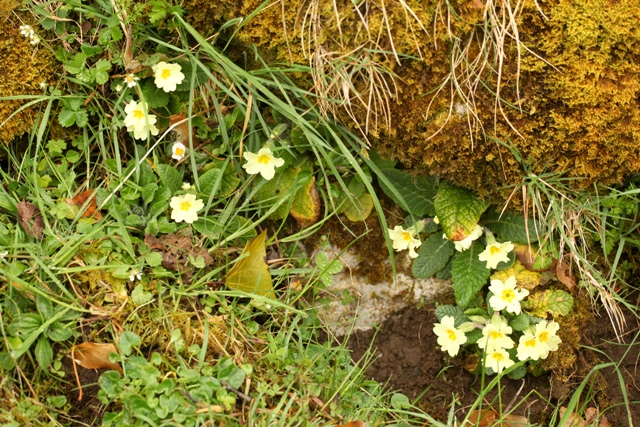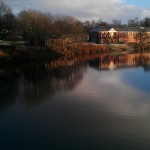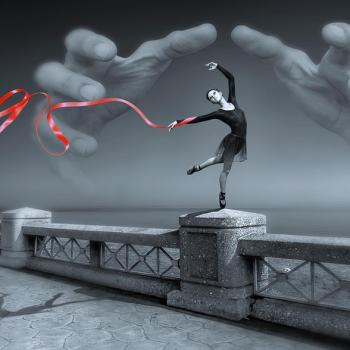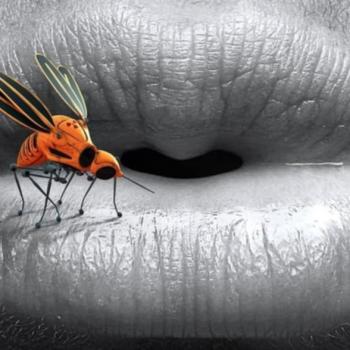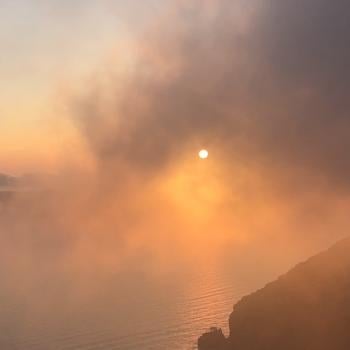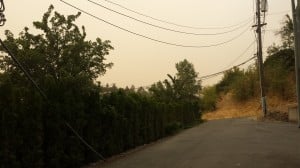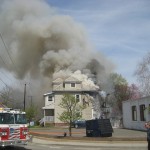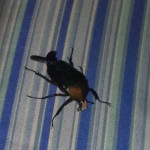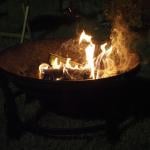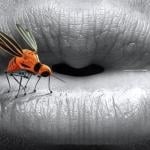Bealtaine heralds the Light half of the Irish year–and am I ever grateful for its arrival! In ancient times, the custom was to count from the dark half: days began with sundown, and the year with winter. This dance of dark and light was woven into the tapestry of culture. We see it personified by Donn, watery god of the dead, and Fionn, a symbol of light as guardian of the living. We see it in the two opposing bulls of the Táin, the Donn Cuailgne and the Finnbheannach; and in Don Fírinne and Finnbharra, the kings of the ‘fairy folk’ of Munster and Connacht. Dark and Light: the dreamtime and waking life. How sweet to finally wake from the long dreamtime of winter!
There are many traditions associated with Bealtaine and I would like to share a few, in the hope they add to your own seasonal celebration. I will keep my sharing informative rather than narrative, for Summer is a time of action: of wooing and ‘maying’, of riding and hosting, of combat and hunting. During the dreamtime of winter we sit and tell stories, but in the light of day, we wake and Live Life!
“May Day serves to divide our story-telling year in two equal halves (no stories after May Day until Samhain, when darkness comes to claim us back). It is considered direly unlucky to get into storytelling around Mayday — singing is a different matter, however.”
Marion Gunn, Folklorist / Linguist, University College Dublin
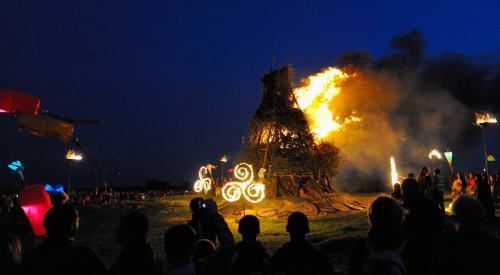
On the Hill of Uisneach, both historically and mythically, Bealtaine fires were lit and a sacred assembly held. It was a time of purification (a theme repeated often), when the cattle and people were cleansed with the smoke from the rising fires. The great fires at Uisneach was echoed by answering fires on nearby summits; a response that might have spread across the island. The resulting “topographic web of fire” stretching from the omphalos of Uisneach outward to the coast of Ireland, would have created a “fire-eye,” a divine oculus mundi–an eye of the land herself–through which Ireland–Eriu–could once again see and be seen.
Of monumental landforms, mythologist Joseph Campbell wrote, “to be seen in the eyes of the Goddess and to move upon [her] as she revealed herself in hill and vale was to be part of both time and timelessness, matter and spirit.”
From the lofty to the daily, we turn to the tiny Primrose. This delicious yellow flower of early spring was collected on May Eve, before dusk, by children who made posies or small bouquets with them. They were hung in the house or over the door, laid on doorsteps and windowsills, strewn in profusion, to protect against the Fair Ones…who traipse at this time of year! As an added benefit, if you rub them on a cow’s udder her milk will increase!
“Yes! the summer is returning,
Warmer, brighter beams are burning;
Golden mornings, purple evenings,
Come to glad the world once more.Nature, from her long sojourning
In the winter house of mourning,
With the light of hope out peeping,
From those eyes that late were weeping,
Cometh dancing o’er the waters,
To our distant shore.”
-Mac Carthy’s “Bridal of the Year.”
Here in Cork, particularly the southern part, May Eve was known as “Nettlemas Night”. Boys would parade the streets with large bunches of nettles, stinging their playmates and occasionally unfortunate passersby who got too close. Girls joined in this as well, usually stinging their lovers or boys they especially liked! In most parts of Ireland, it was believed that taking 3 meals of nettles in May guarded against illness for the rest of the year. Other parts of the country dispensed with the stinging, instead nettles were gathered on May Eve, pressed into a juice, and everyone in the house drank a mouthful, … to keep a “good fire in them” for the rest of the year.
Of interest to us Hedge Witches is the May Eve Curse. Vervain, Speedwell, Eyebright, Mallow, Yarrow, Self-Heal, St. Johns Wort: if collected on May Eve under the enchanting words, these herbs do great harm and nothing natural or supernatural may dissuade. Though I tell you this, not a single one of these flowers are in bloom yet! In fact, they are all June bloomers. So either the weather was once greatly improved, or there wasn’t much cursing going on.
Now then, fair and gentle, rude and rustic readers—country swains and city dames—boys of the Liberty, from Blackpits to Mullinahack, from the banks of the Dodder to the heights of Ballynascorney—girls of Finglas and bucks of Fingal, how have you spent your May Eve?—how did you welcome May Morning, and how do you purpose to celebrate the birth-day of summer? Have you danced to the elfin pipers that played under the thorns of the Phoenix last night? Did you leap through the bonfires that blazed upon Tallaght and Harold’s-cross Green? Were you out yester-eve to welcome the “Young May Moon?” or up before sunrise this morning to gather the maiden dew from the sparkling gossamer, to keep the freckles off your pretty faces?—or have you been—
——————————— “seeking
A spell in the young year’s flowers.
The magical May-dew is weeping
It’s charms o’er the summer bow’rs.”Have you found the name of your true love smeared by the snail you set between the plates last evening? and have you chosen a Queen of the May, whose path you’ll strew with pasture flowers, as you lead her round the garlanded pole of the Tolka? Are your doors and windows decorated with primroses and cowslips, and May-flowers gathered by the meadows and green inches of your lovely Anna Liffey? Butchers of Patrick’s Market and Bull Alley, and boys of the Coombe and the Poddle, are you ready, as of yore, to “cut de bosh, spite of de Devil and de Polis?” Up, weavers of Newmarket and Meath Street, and join with the Ormond boys; will you suffer the white-coated boddaghs of Meath to carry off the prizes at Finglas, and steal the May-dew from the rosy-lipped girls of Glasnevin?
-Sir William Wilde; Irish Popular Superstitions; 1850
Happy Bealtaine! Let the festivities begin! 

